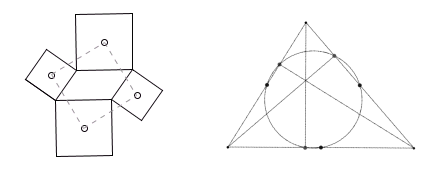[Bertrand] Russell is reputed at a dinner party once to have said, ‘Oh, it is useless talking about inconsistent things, from an inconsistent proposition you can prove anything you like.’ Well, it is very easy to show this by mathematical means. But, as usual, Russell was much cleverer than this. Somebody at the dinner table said, ‘Oh, come on!’ He said, ‘Well, name an inconsistent proposition,’ and the man said, ‘Well, what shall we say, 2 = 1.’ ‘All right,’ said Russell, ‘what do you want me to prove?’ The man said, ‘I want you to prove that you are the pope.’ ‘Why,’ said Russell, ‘the pope and I are two, but two equals one, therefore the pope and I are one.’
— Jacob Bronowski, The Origins of Knowledge and Imagination, 1979






